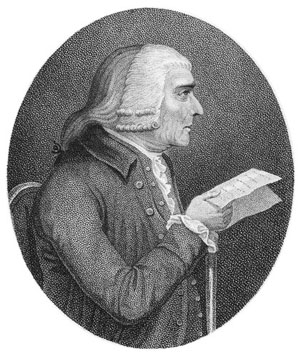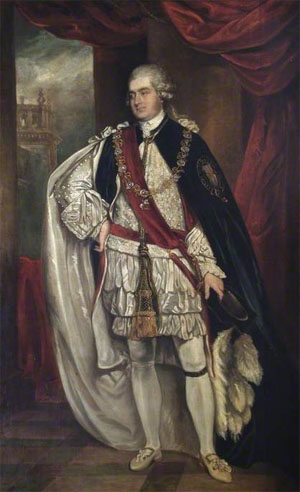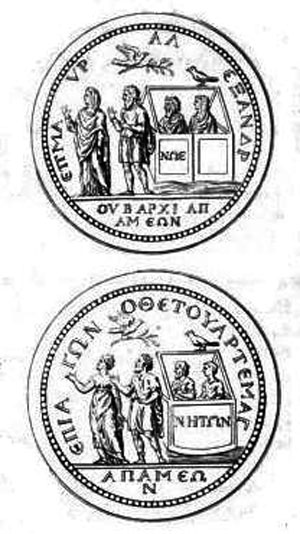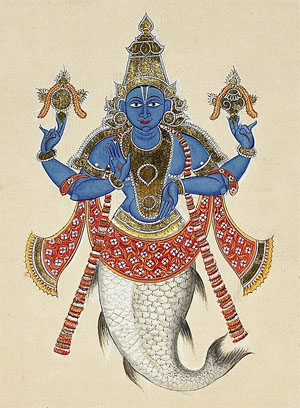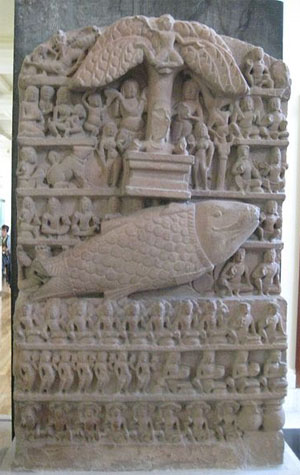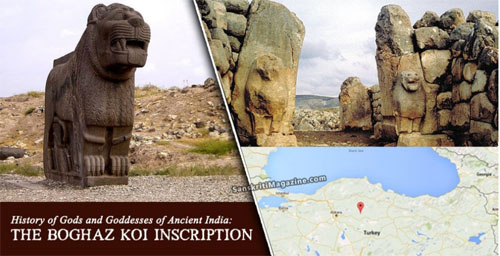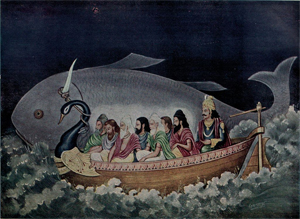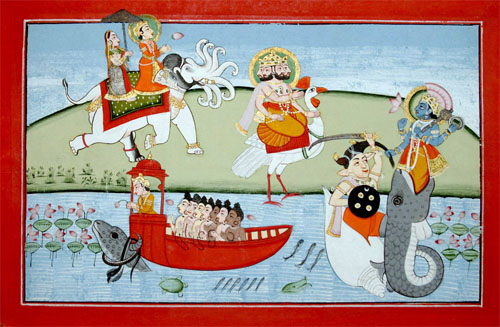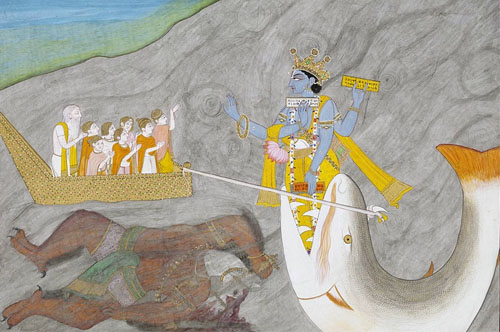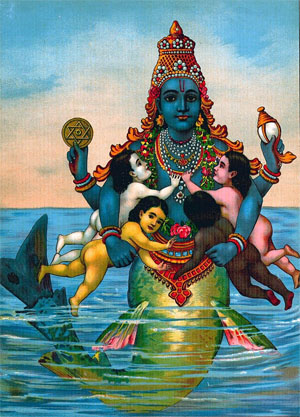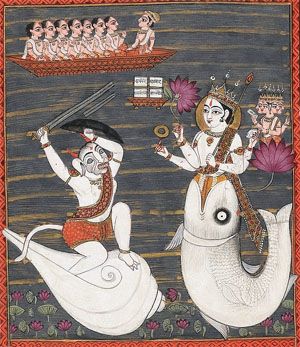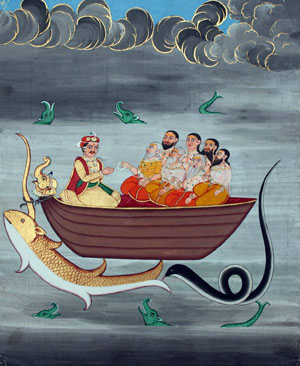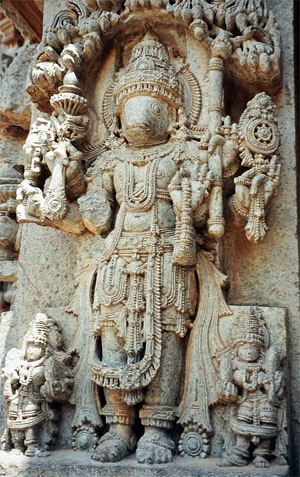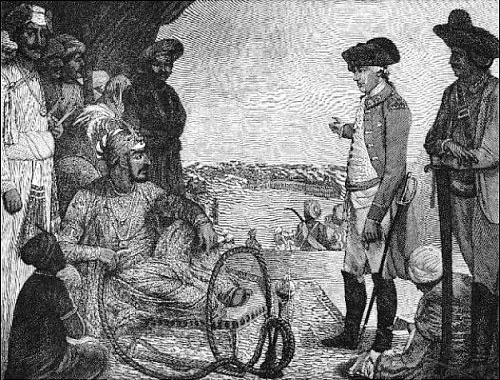The Credibility of Early Roman History
by Samuel Ball Platner
The American Historical Review, Vol. 7, No. 2. pp. 233-253
January, 1902
NOTICE: THIS WORK MAY BE PROTECTED BY COPYRIGHT
YOU ARE REQUIRED TO READ THE COPYRIGHT NOTICE AT THIS LINK BEFORE YOU READ THE FOLLOWING WORK, THAT IS AVAILABLE SOLELY FOR PRIVATE STUDY, SCHOLARSHIP OR RESEARCH PURSUANT TO 17 U.S.C. SECTION 107 AND 108. IN THE EVENT THAT THE LIBRARY DETERMINES THAT UNLAWFUL COPYING OF THIS WORK HAS OCCURRED, THE LIBRARY HAS THE RIGHT TO BLOCK THE I.P. ADDRESS AT WHICH THE UNLAWFUL COPYING APPEARED TO HAVE OCCURRED. THANK YOU FOR RESPECTING THE RIGHTS OF COPYRIGHT OWNERS.
THE PREFACE.
It is a maxim in the science of legislation and government, that Laws are of no avail without manners, or, to explain the sentence more fully, that the best intended legislative provisions would have no beneficial effect even at first, and none at all in a short course of time, unless they were congenial to the disposition and habits, to the religious prejudices, and approved immemorial usages of the people for whom they were enabled; especially if that people universally and sincerely believed, that all their ancient usages and established rules of conduct had the sanction of an actual revelation from heaven: the legislature of Britain having shown, in compliance with this maxim, an intention to leave the natives of these Indian provinces in possession of their own Laws, at least on the titles of contracts and inheritances, we may humbly presume, that all future provisions, for the administration of justice and government in India, will be conformable, as far as the natives are affected by them, to the manners and opinions of the natives themselves; an object which cannot possibly be attained, until those manners and opinions can be fully and accurately known. These considerations, and a few others more immediately within my province, were my principal motives for wishing to know, and have induced me at length to publish, that system of duties, religious and civil, and of law in all its branches, which the Hindus firmly believe to have been promulged in the beginning of time by Menu, son or grandson of Brahma, or, in plain language, the first of created beings, and not the oldest only, but the holiest of legislators; a system so comprehensive and so minutely exact, that it may be considered as the Institutes of Hindu Law, preparatory to the copious Digest, which has lately been compiled by Pandits of eminent learning, and introductory perhaps to a Code which may supply the many natural defects in the old jurisprudence of this country, and, without any deviation from its principles, accommodate it justly to the improvements of a commercial age.
We are lost in an inextricable labyrinth of imaginary astronomical cycles, Yugas, Mahayugas, Calpas, and Menwantaras, in attempting to calculate the time, when the first Menu, according to the Brahmens, governed this world, and became the progenitor of mankind, who from him are called Manavah; nor can we, so clouded are the old history and chronology of India with fables and allegories, ascertain the precise age, when the work, now presented to the Publick, was actually composed; but we are in possession of some evidence, partly extrinsick and partly internal, that it is really one of the oldest compositions existing. From a text of Parasara discovered by Mr. Davis, it appears, that the vernal equinox had gone back from the tenth degree of Bharani to the first of Aswini, or twenty-three degrees and twenty minutes, between the days of that Indian philosopher, and the year of our Lord 499, when it coincided with the origin of the Hindu ecliptick; so that Parasara probably flourished near the close of the twelfth century before Christ; now Parasara was the grandson of another sage, named Vasishtha, who is often mentioned in the laws of Menu, and once as contemporary with the divine Bhrigu himself; but the character of Bhrigu, and the whole dramatical arrangement of the book before us, are clearly fictitious and ornamental, with a design, too common among ancient lawgivers, of stamping authority on the work by the introduction of supernatural personages, though Vasishtha may have lived many generations before the actual writer of it, who names him, indeed, in one or two places as a philosopher in an earlier period. The style, however, and metre of this work (which there is not the smallest reason to think affectedly obsolete) are widely different from the language and metrical rules of Calida's, who unquestionably wrote before the beginning of our era; and the dialect of Menu is even observed, in many passages, to resemble that of the Veda, particularly in a departure from the more modern grammatical forms; whence it must, at first view, seem very probable, that the laws, now brought to light, were considerably older than those of Solon or even of Lycurgus, although the promulgation of them, before they were reduced to writing, might have been coeval with the first monarchies established in Egypt or Asia: but, having had the singular good fortune to procure ancient copies of eleven Upanishads, with a very perspicuous comment, I am enabled to fix, with more exactness, the probable age of the work before us, and even to limit its highest possible age by a mode of reasoning, which may be thought new, but will be found, I persuade myself, satisfactory; if the Publick shall, on this occasion, give me credit for a few very curious facts, which, though capable of strict proof, can at present be only asserted. The Sanscrit of the three first Vedas, (I need not here speak of the fourth) that of the Manava Dherma Sastra, and that of the Paranas, differ from each other in pretty exact proportion to the Latin of Numa, from whose laws entire sentences are preserved, that of Appius, which we see in the fragments of the Twelve Tables, and that of Cicero, or of Lucretius, where he has not affected an obsolete style: if the several changes, therefore, of Sanscrit and Latin took place, as we may fairly assume, in times very nearly proportional, the Vedas must have been written about 300 years before these Institutes, and about 600 before the Puranas and Itihasas, which, I am fully convinced, were not the productions of Vyasa; so that, if the son of Parasara committed the traditional Vedas to writing in the Sanscrit of his father’s time, the original of this book must have received its present form about 880 years before Christ’s birth. If the texts, indeed, which Vyasa collected, had been actually written in a much older dialect, by the sages preceding him, we must inquire into the greatest possible age of the Vedas themselves: now one of the longest and finest Upanishads in the second Veda contains three lists, in a regular series upwards, of at most forty-two pupils and preceptors, who successively received and transmitted (probably by oral tradition) the doctrines contained in that Upanishad; and as the old Indian priests were students at fifteen, and instructors at twenty-five, we cannot allow more than ten years, on an average, for each interval between the respective traditions; whence, as there are forty such intervals, in two of the lists between Vyasa, who arranged the whole work, and Ayasya, who is extolled at the beginning of it, and just as many, in the third list, between the compiler and Yajnyawalcya, who makes the principal figure in it, we find the highest age of the Yajur Veda to be 1580 years before the birth of our Saviour, (which would make it older than the five books of Moses) and that of our Indian law tract about 1280 years before the same epoch. The former date, however, seems the more probable of the two, because the Hindu sages are said to have delivered their knowledge orally, and the very word Sruta, which we often see used for the Veda itself, means what was heard; not to insist that Culluca expressly declares the sense of the Veda to be conveyed in the language of Vyasa. Whether Menu or Menus in the nominative and Meno's in an oblique case, was the same personage with Minos [Minos was a mythical king in the island of Crete, the son of Zeus and Europa. He was famous for creating a successful code of laws; in fact, it was so grand that after his death, Minos became one of the three judges of the dead in the underworld. Minos, by Wikipedia], let others determine; but he must indubitably have been far older than the work, which contains his laws, and though perhaps he was never in Crete, yet some of his institutions may well have been adopted in that island, whence Lycurgus, a century or two afterwards, may have imported them to Sparta.
-- Institutes of Hindu Law: Or, The Ordinances of Menu, According to the Gloss of Culluca. Comprising the Indian System of Duties, Religious and Civil, Verbally translated from the original Sanscrit, With a Preface, by Sir William Jones
THE CREDIBILITY OF EARLY ROMAN HISTORY1 [An address delivered by the President of the American Philological Association at its annual meeting, held in Cambridge, Mass., July, 1901.]
A REPROACH frequently cast at those who are engaged in the study of classical antiquity, is that their subject-matter has been worked over so long and so often that no further results can be obtained that have any value for men of the present. When new fields of research are so widely spread around us, it is worse than foolish to spend the time and effort on the old. Be this as it may, there is still one phase of the study of classical antiquity which has so far escaped the general condemnation. History, even of the olden time, has not yet become the object of the scorn of exponents of the latest educational ideas, and is in fact very much in vogue. The historical method must be applied, and rightly, to all branches of scientific study, and in spite of the unwillingness on the part of many to recognize the fact, it has been true for some years that teachers of the classics have insisted that the full culture-value of their subject could be obtained only when proper attention was paid to the social, political and economic conditions under which the literature was developed.
If we look carefully to the history of the world, what can be more important than a correct appreciation of the early centuries in the history of Greece and Rome, periods during one of which were developed the literature and art which have ever since been the unattainable standard of the world, and during the other of which that power arose which has been the paramount influence in law and government in all succeeding ages. Certainly we cannot be accused of dealing with dead issues in laboring over the problems presented to us in either of these fields, and it is to the nature of the early history of the city of Rome that I now ask your attention.
It is a mere commonplace to remark that the earliest stages in the history of most peoples present very great difficulties in the way of arriving at anything like the exact facts, and this is usually due to the insufficiency of evidence that has come down to us, and to the inevitable errors resulting from the nature of tradition. In the case of the early history of the greatest city in the world, the difficulty is immeasurably increased by the well-known fact, that in addition to all the errors inherent we have to do with a considerable amount of material which is known to be the product of the deliberate invention of later times. So while the problem becomes exceedingly perplexing, the eagerness of scholars to solve it, becomes correspondingly keen. Nor can it be said that time and labor expended on its solution are wasted, so long as any hope remains of arriving at something like the real facts.
There are certain peculiar features in the case of Roman history, the most noticeable of which is the character of Roman literature, on which we must depend so much for our information. Here is no developing native product, but a literature due to foreign impulse, and worked out in conscious imitation of Greek models, both as regards form and substance. The earliest annalists of Rome intentionally followed their patterns, and the elimination of the Greek from the native is one of the most difficult parts of the problem. Most noticeable again in its effect upon the tradition of Roman history, was the servile attitude maintained towards Rome by the rest of the world after the Punic wars, which resulted in a deliberate falsification of everything in favor of the dominant power. With a very few apparent exceptions like Metrodorus of Skepsis, almost all historiographers of that period took part in the general chorus of adulation, entirely regardless of the truth. A third peculiarity of the situation is the presence of what was really an official or "canonical" tradition. The methods employed by the Greek and Roman manufacturers of early history, had resulted in the promulgation of numerous narratives of the same events, so contradictory as to disturb even the Romans themselves, and to bring about the formation of a sort of official version which became in a sense "canonical," and was generally accepted by the principal writers of the post-Ciceronian age. This is the account that Livy, for instance, usually presents, although all our historians do not hesitate to give very frequently other versions along with the "canonical." These conditions were recognized by the Roman historians themselves, but with hardly an exception, they failed entirely to develop what we call the critical method. Beyond a certain point this could not have been expected, but it is a source of surprise and disappointment that we have to wait until the close of the first century to find a Roman Thucydides.
The legacy of Rome, then, to the world, so far as her own early history is concerned, is a mass of fable, fact and fancy, inextricably interwoven, and commended to us by all the charm of Livian rhetoric, and this inheritance has been accepted and enjoyed without question or cavil, by the vast majority even of scholars until very recent times. But it was inevitable that a day of reckoning should come, and as we all know, it was in the study of Niebuhr that the demolition and reconstruction of Roman history began. Niebuhr, Schwegler, Mommsen! Three mighty names to conjure with, and how great a contribution to the science of historical criticism they represent! But as in all other departments of human knowledge, where room for the erection of what is to last forever must be cleared by the destruction of what is insecure, the pendulum of belief swings widely but irregularly, sometimes rapidly, sometimes slowly, and it is long before the stable equilibrium of admitted fact is reached.
So in the matter under discussion, we have passed through the stage where all that has come down to us about the regal period was ruthlessly cast aside as absolutely false, the succeeding stage when men were inclined to see much that was true beneath the overlying strata of legend, then a stage when, in some quarters at least, an almost medieval attitude of belief was assumed, and now finally a period when even the first condition of skepticism seems to be well-nigh surpassed. There is, if we may so speak, a very renaissance of unbelief with regard to the first three centuries of Rome's existence. This oscillation may be paralleled perhaps by the change in the position of scholars with respect to the Old Testament, and in the field of Roman life, by the varying estimates of Cicero, his character and influence. From Drumann and Mommsen to Aly and Zielinski is a far cry, and between them in time and opinion we find everything from entire repudiation of a political renegade to unquestioning faith in the saviour of the commonwealth. But as the latest voice of Ciceronian criticism has tended to rehabilitate the great orator, the latest voice of historical criticism, uttered too by a descendant of the Romans themselves, is the most powerful yet heard in the attack upon all that tradition has handed down concerning the early history of Rome.
I refer of course to Ettore Pais and his great work La Storia di Roma, in the first two volumes of which he has discussed the history of Rome down to the time of Pyrrhus, and while following out the lines laid down by Mommsen in the Roemische Forschungen has gone far beyond that great man in the scope of his work, comprehensiveness of treatment and importance of results.
It is the misfortune of modern Italian scholarship that it has been so completely eclipsed by the transalpine; and the paucity of men of the first rank in the present generation has caused the world of scholars to look with suspicion upon an Italian book. But here at least is a man to be reckoned with, and whether his conclusions are accepted or rejected, they cannot be ignored, and his material and methods must be studied with the utmost attention. Apparently the importance of his work has so far been overlooked except by a very few. This is natural and excusable, particularly in this country, where the prevailing attitude towards the work of Italians is illustrated by the fact that up to the middle of last February, this book, though issued in 1898 and 1899, had not been placed on the shelves of the library of one of our most famous universities.
Before proceeding to the discussion of the results of this latest investigation of the sources of our knowledge of early Roman history, our attention should be fixed upon a factor in the problem, not new by any means, but which has recently assumed much larger proportions than formerly, that is the control exercised over results obtained in other ways by archaeological and topographical discoveries. The increased importance of material of this kind finds an excellent illustration in the information which has come into our hands as a result of the systematic excavations carried on in the Forum and Comitium during the past two years and a half. It was to be expected that in the archaeological remains of these two spots -- one the center of Roman political life, the other the center of all else -- much would be found to help in tracing the course of development of the city itself, as it was marked in monuments of brick and stone, monuments which could hardly be falsified by succeeding generations.
In general too little attention has been paid to the reciprocal relations of topography and history. Due weight has been readily given to the influence of environment upon the development of the individual, but there has been a failure to recognize the direct bearing of topographical conditions upon the historical progress of a nation, and to see how much with regard to the latter may be inferred from the former. As a matter of fact, the discoveries made within a space twenty feet square at the edge of the Comitium have precipitated a violent struggle between those who accept the traditional account of the regal period and those who do not, and the final settlement of the questions raised by these discoveries may go a long way in determining our attitude toward that tradition. To be sure the problem suggested here is not purely topographical but involves other elements as well, and the point may be better illustrated in a very simple case by noting that topographical conditions prove at once that Livy's account of the settlement of many thousand Latins in the valley ad Murciae in the days of Ancus Martius, must be absolutely wrong.
In view of the certain additions which have been and will continue to be made to our knowledge of the material remains of ancient Rome, and the publication of so notable a book as that of Pais, no apology is necessary for directing our attention again to the credibility of early Roman history, and we can perhaps do no better than follow our new leader in a brief review of the character of some of the sources from which information as to the events of the early period is derived, and of some of these events themselves.
At the very outset one must note the strange contrast that exists between the remarkable amount of detailed information given us by the annalists and the comparatively late period at which they did their work. There is a still greater contrast between this elaborate history and that of other peoples at the same relative stage of development, like the peoples of the east and of the Greek cities. If we know so little of the history of Magna Graecia before the fourth century, how is it that we know so much about Rome in the eighth and seventh?
Now it is as certain as anything can be, that the literature and culture of the Romans were due to Greek influence, and, necessarily, that what is related of their early history must have been due in some way or other to the labors of Greek historiographers transferred to native channels. The earliest Roman annalist wrote in Greek in the time of Hannibal, which two facts are enough in themselves to suggest the source and character of his story. We are told expressly that those who first wrote the history of Rome were Greeks, and their interest in things barbarian and Roman arose as a result of the intercourse between Greeks and Romans in the fifth century, when the Siciliotes and inhabitants of the Greek cities in southern Italy were necessarily brought into contact with the rising power of Rome. But though the earliest notices go back so far, it was not until the third century that Greek historians seem to have busied themselves especially with Rome, and the reason for this is easy to see. When in that momentous struggle between Greek and barbarian which culminated in the defeat of Pyrrhus, it became plain to every one that the seat of empire had been removed across the Adriatic, the clever Greek read the signs of the times and fell at once to describing, with or without knowledge, the beginnings and history of this new power. The form in which their narratives were put forth, determined all subsequent conceptions of the early history of Rome.
When these Greeks and their earliest Roman followers attempted to write the history of the first centuries of Rome, what had they in the way of records? The statement often made by the writers of the Ciceronian period, that all monumental records such as statues, laws and inscriptions of various sorts, had perished in the Gallic invasion, must be true for the most part, but supposing that some of these monuments were in existence -- and the discovery of the old inscription and surrounding structures in the Forum proves that some did survive -- it is hardly possible that they would have been used to any great extent in working out the history of the earliest times. The evidence of the few fragments that now remain from the early days agrees with what we should infer from arguments of another kind, in showing that, if there had been no destruction like that wrought by the Gauls, there would have been few monuments of a sort to afford reliable historical information of a remote period. There is therefore little account to be taken of matter outside of oral and written records. The banquet songs described by Cato were doubtless a familiar feature of daily life, but even without the distinct repudiation of Cicero and Livy, we should recognize at once their worthlessness as historical documents.
The Annales Maximi were according to Cato's statement a list of magistrates, prodigies, eclipses and the price of corn. But these meager lists cannot have made up those eighty rolls which Cicero describes and which contained the history of the city from the beginning down to 133 B.C., and which were diffuse enough to contain Piso's story of Romulus's use of wine. These Annales were written out long after the beginning of Latin literature, and owed their form and much of their content to the annals of the Greeks. In Pais's words, "The little that we know of them reveals such a direct imitation of the Greek writers, such abundance of words, or as we might better say, such garrulity, as suited the chatter of barbers [quelle ciancie di barbieri] which Polybius censures in Sosilus and Chaerea, the historians of Hannibal, but which did not suit in any way the redaction of state documents, compiled at a tolerably early date." No fragment of the Annales Maximi in our possession belongs to a redaction earlier than the third century. In short, after Pais's keen critique, it is difficult to see in them anything but a second century creation, based on the tradition of the great Roman families, the works of early Greek historiographers, and the earliest Roman poets like Ennius, and we must recognize the fact that "these fragments which have come down to us have nothing to do with the most ancient pontifical tablets which were little more than an illustration of the calendar."
The influence of Ennius, Naevius and other early Roman poets, if such there were, in shaping the legendary history of the early period, has probably been greatly underestimated. It can be shown further, that these poets drew their material for early times, as well as their inspiration from their Greek predecessors and contemporaries. It would be idle to discuss at length the characteristics of these Greeks who approached their subject with no intention or desire to learn the truth, but only to produce a skilfully constructed poem into which could be woven a vast mass of legend and myth, with the natural result that the product was characterized by pure imagination, duplication, and falsification. This compilation of the Annales Maximi during the second century, under the influence of the first Roman poets and annalists, gave rise to the formation of what is known as the "canonical" tradition of the origin and early history of the city, and this "canonical" form which was an attempt to correlate divergent accounts, seems to have been put into final shape by Varro in his systematization and arrangement of all existing knowledge.
Our own chief literary sources of information are three, Diodorus Siculus, Livy and Dionysius of Halicarnassus. The two latter give in general the accepted official version, while Diodorus is apt to present divergent accounts, and is usually credited with a greater degree of independent judgment. Nevertheless, the evidence of all three has practically no first hand value. The stream cannot rise higher than its source.
Interesting illustrations of the way in which this early history was manufactured, abound on every hand. Monumenta of various sorts were made and attributed to the days of the Kings, as the lituus of Romulus, of which Cicero speaks in the De Divinatione 1 [II. 80.]: "So do not mention the lituus of Romulus which you say could not have been burned in the great fire;" and of which Plutarch says: "It was kept in the Capitol, but lost when Rome was taken by the Gauls; afterwards when the barbarians had quitted the city, it was found buried deep in ashes, untouched by the fire, whilst everything about it was destroyed and consumed." Pliny the Elder2 [N. H., XXXIV. 22-23.] describes the costume of statues of the time of Romulus and Numa, and says of the statues of the three Fates near the Rostra: "I should suppose that these and that of Attus Navius were the first erected in the time of Tarquinius Priscus, if it were not for the fact that the statues of the earlier kings were on the Capitol," -- although in a preceding chapter he had expressly stated that the first bronze statue at Rome was made from the property of Spurius Cassius. Livy tells3 [I. 12, 6.] how Romulus vowed the temple to Jupiter Stator in the battle between the Romans and Sabines, but in the tenth book4 [36, II.] he writes: "Meanwhile the Consul raising his hands to heaven, in a clear voice so that he might be heard plainly, vowed a temple to Jupiter Stator, if the flight of the Roman line should be checked," and a little later1 [X. 37, 15.] having noticed the discrepancy, he continues: "And in this battle a temple was vowed to Jupiter Stator, as Romulus had previously vowed one; but he had consecrated only a fanum, that is the site set apart for the temple." Varro, quoted by Macrobius,2 [I. 13, 21.] speaks of seeing a bronze tablet on which was engraved a law with regard to intercalary months, said to have been passed in the year 472 B.C. The most trustworthy account, however, refers this legislation to the year 191 B.C.
We may compare also the epigraphic fabrication related by Suetonius in describing the prodigies that happened at the death of Caesar.3 [Jul. Caes. 81.] A bronze tablet was found in the tomb where Capys was said to have been buried, on which was cut in Greek this prophecy: "When the bones of Capys shall be uncovered, a descendant of Julius shall be slain by the hands of his kinsmen, and soon afterwards avenged by great slaughter throughout Italy." And Suetonius continues: "The authority for this statement is Cornelius Balbus, a most intimate friend of Caesar, so that no one is to suppose it fabulous or fictitious."
To what extent etymology was made to serve the purposes of the historiographer, may be seen on every page of Varro's famous work De Lingua Latina, of which the following is a notorious and most instructive example:
Various reasons are assigned for the name Aventine. According to Naevius, it was derived from avis, because the birds came there from the Tiber; according to others the Alban king Aventinus was buried there; and according to others still the word was derived from adventus hominum because on that hill the temple of Diana was erected which was a common sanctuary of the Latins. "
"I prefer the derivation ad advectu, because formerly this hill was separated from the rest by marshes, and therefore people were brought thither from the city on rafts."
The manner in which topographical conditions and facts were utilized is illustrated by the tale found in Ovid, Valerius Maximus and Pliny, to the effect that the horns cut in the arch of the Porta Raudusculana in the Servian wall, commemorated the curious experience of a certain Roman praetor, Cipus Genucius, from whose head sprang such horns, as he was leading his army through this gate.
We can understand the direct and formal imitation of Greek models better if we keep in mind the famous definition of Quintilian4 [X. I, 31.]: "historia ... est enim proxima poetis et quodammodo carmen solutum et scribitur ad narrandum non ad probandum." [Google translate: history ... is near a sense of poetry and released a song written in the statement to be proved.] From form to matter is but a step, and the process is the same as that illustrated so distinctly in the domain of art. The Romans compared themselves to the Greeks long before Plutarch wrote his Lives, and they invented incidents in the careers of their heroes which should correspond to those of famous Greeks. Thus Scipio Africanus was said to have owed his birth to a miracle similar to that which brought Alexander the Great into being, and Tarquinius Superbus copied the procedure of Periander. The inevitable result was that the euhemerism of Ennius [an approach to the interpretation of mythology in which mythological accounts are presumed to have originated from real historical events or personages. Euhemerism supposes that historical accounts become myths as they are exaggerated in the retelling, accumulating elaborations and alterations that reflect cultural mores. It was named for the Greek mythographer Euhemerus, who lived in the late 4th century BC. In the more recent literature of myth, such as Bulfinch's Mythology, euhemerism is termed the "historical theory" of mythology. -- Euhemerism, by Wikipedia] destroyed almost all of the germs of native mythology and theogony, and indicated the lines along which Roman historiography must move.

